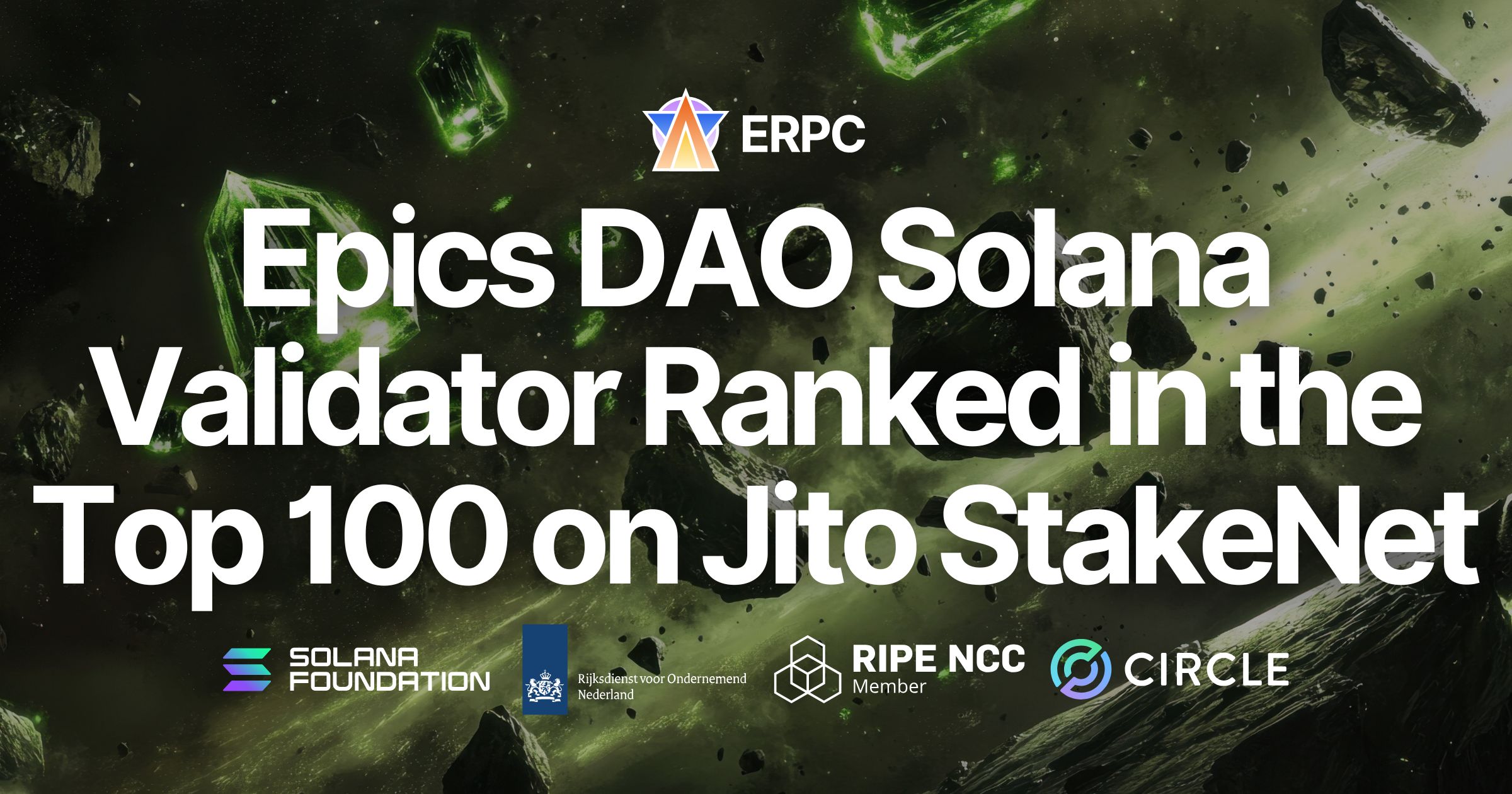ERPC Expands Chicago Datacenter Network to 10 Gbps. Optimizing Connectivity from the U.S. Midwest to the West Coast through Solana DoubleZero CHI–SLC–LAX Dedicated Lines
ERPC Expands Chicago Datacenter Network to 10 Gbps. Optimizing Connectivity from the U.S. Midwest to the West Coast through Solana DoubleZero CHI–SLC–LAX Dedicated Lines
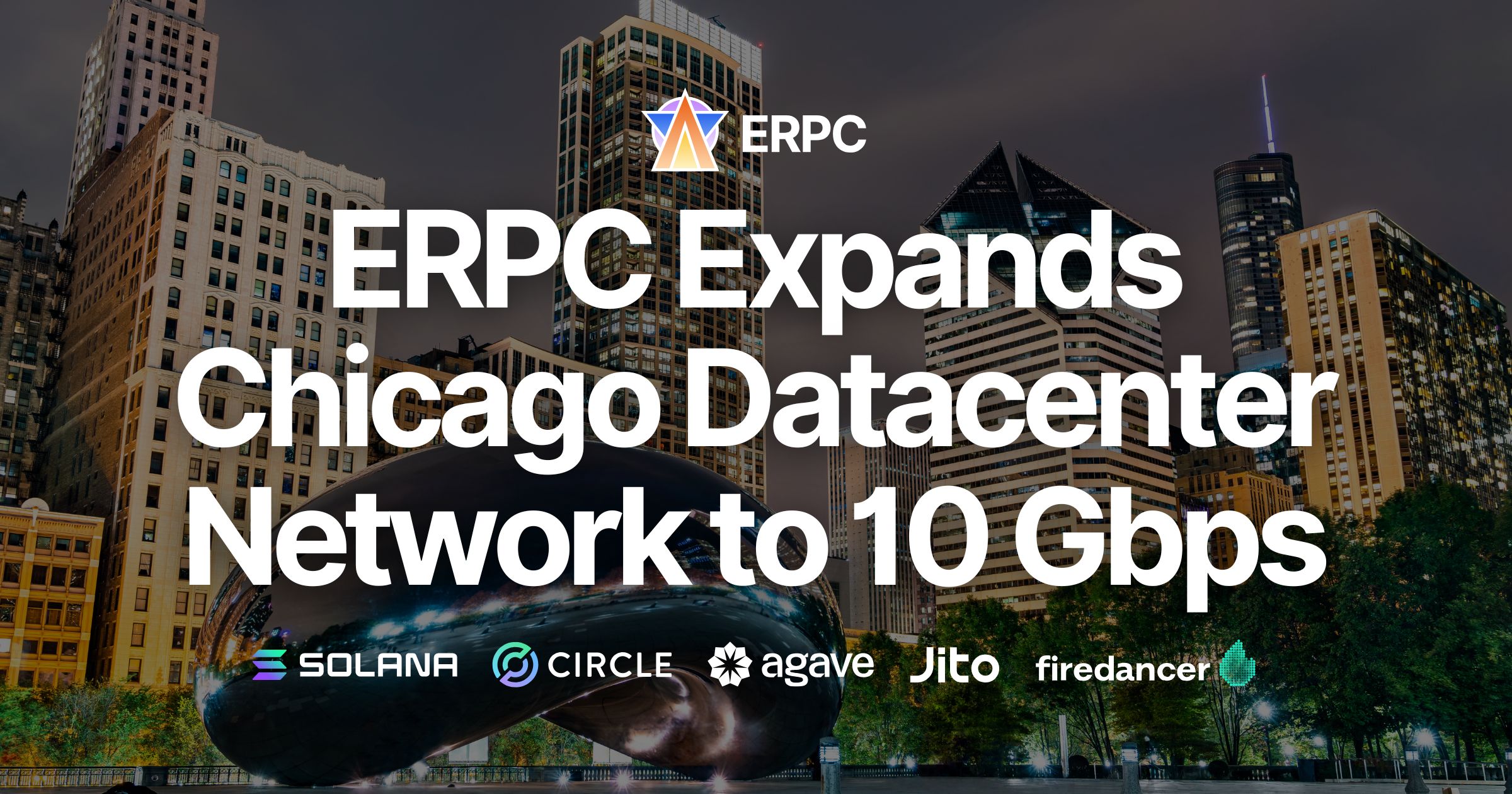
ELSOUL LABO B.V. (Headquarters: Amsterdam, Netherlands; CEO: Fumitake Kawasaki) and Validators DAO have completed a major bandwidth upgrade of the ERPC Chicago region, bringing every server online at 10 Gbps as of October 14, 2025.
Previously operating at 3 Gbps, the region has now been unified at 10 Gbps, significantly increasing simultaneous throughput and ensuring stable response times even under peak demand.
All existing plans and prices remain unchanged, and every user—including those on Bundle plans—automatically benefits from the enhanced capacity.
Previously operating at 3 Gbps, the region has now been unified at 10 Gbps, significantly increasing simultaneous throughput and ensuring stable response times even under peak demand.
All existing plans and prices remain unchanged, and every user—including those on Bundle plans—automatically benefits from the enhanced capacity.
Background
Located in the U.S. Midwest, Chicago serves as a key communications hub linking the East and West Coasts.
Its central inland position allows efficient connectivity to both sides of the country, enabling balanced traffic distribution across national networks.
Its central inland position allows efficient connectivity to both sides of the country, enabling balanced traffic distribution across national networks.
Until now, the Chicago region had maintained stable operation at 3 Gbps, but continued growth in users and traffic made higher bandwidth essential.
This 10 Gbps upgrade reinforces Chicago’s role as a core infrastructure point supporting data flows throughout North America.
This 10 Gbps upgrade reinforces Chicago’s role as a core infrastructure point supporting data flows throughout North America.
DoubleZero Connectivity and Chicago’s Strategic Position
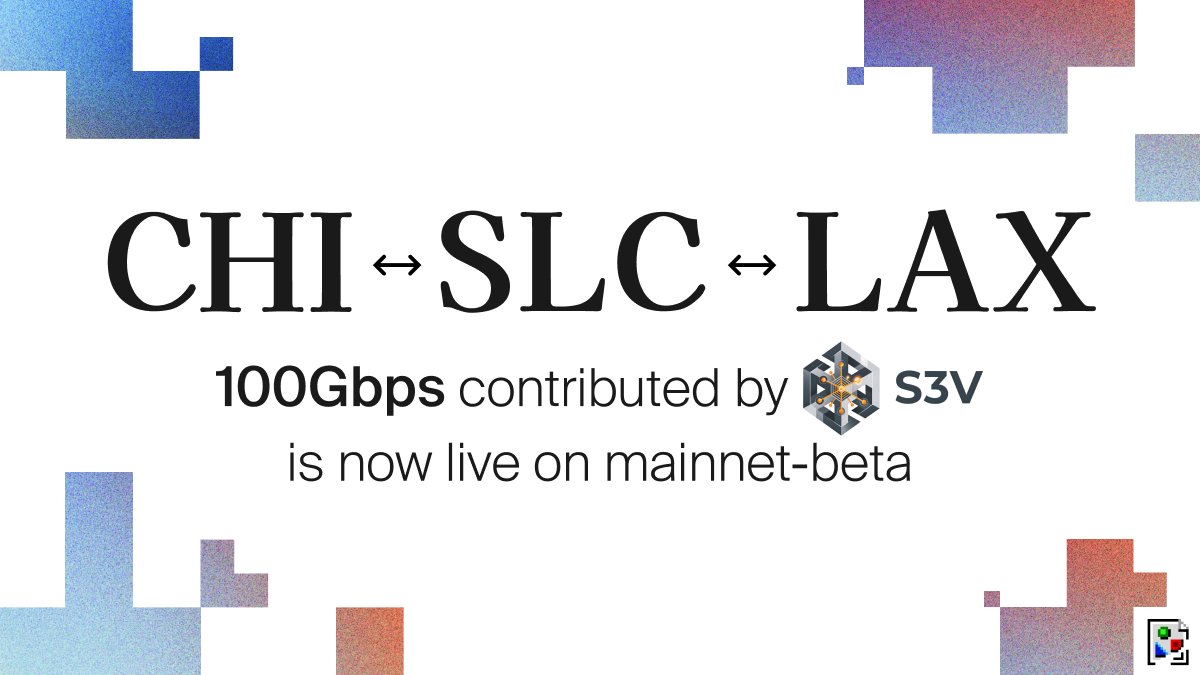
As part of this expansion, a 100 Gbps dedicated line connecting Chicago (CHI), Salt Lake City (SLC), and Los Angeles (LAX) within the Solana DoubleZero network is now fully operational.
This upgrade strengthens communication routes from the Midwest to the West Coast, enabling wider-area, low-latency, and more stable data transmission.
This upgrade strengthens communication routes from the Midwest to the West Coast, enabling wider-area, low-latency, and more stable data transmission.
Chicago also maintains high-speed connectivity to major networks toward New York and the East Coast.
Positioned at the center of the continental United States, it functions as a national relay hub, bridging east-west traffic along the shortest possible routes.
Positioned at the center of the continental United States, it functions as a national relay hub, bridging east-west traffic along the shortest possible routes.
What is DoubleZero
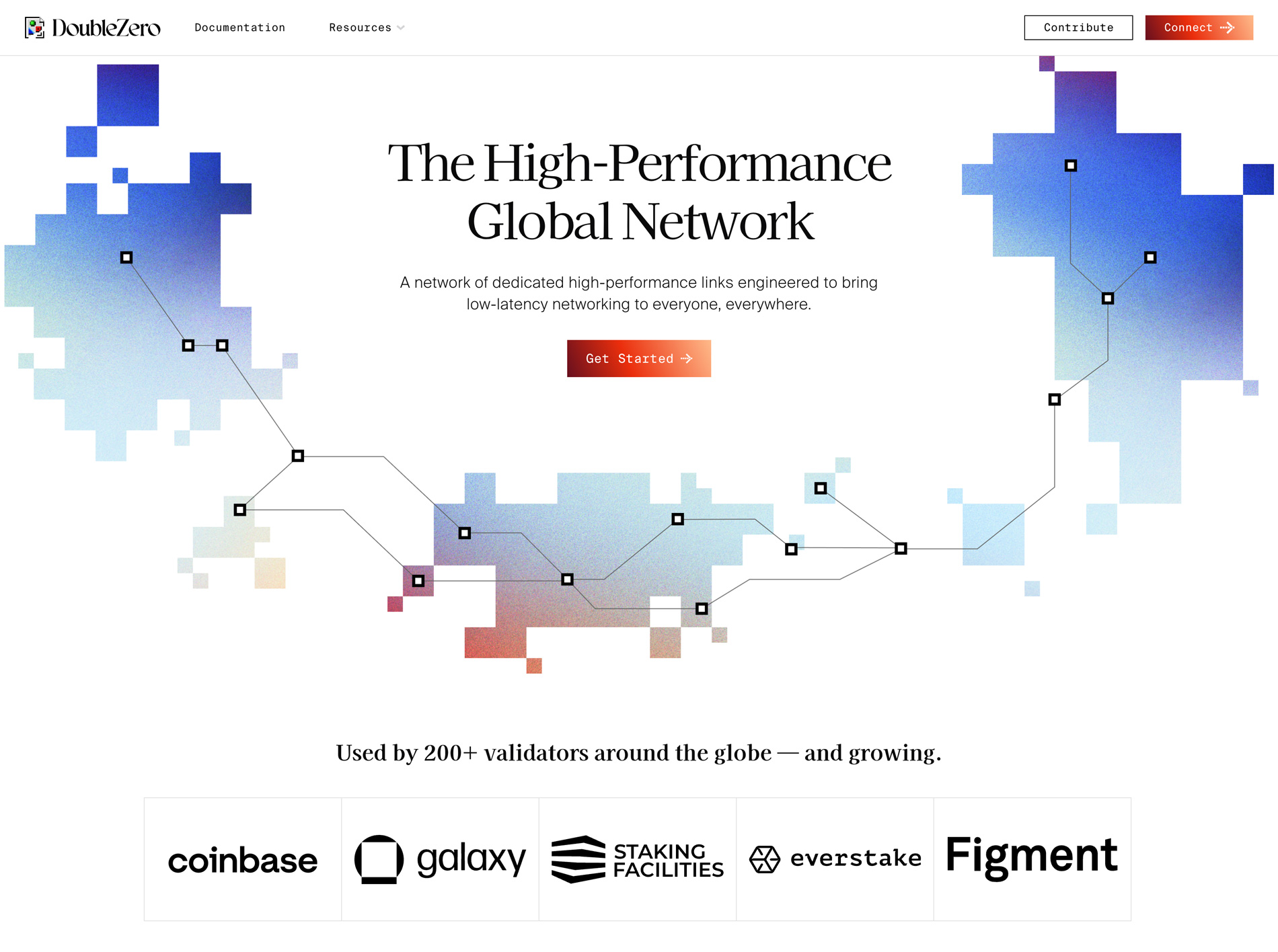
DoubleZero is a dedicated optical-fiber network that directly interconnects Solana validators and RPC nodes.
By bypassing congestion and route variability inherent to public internet paths, it enables data to travel through the shortest and most consistent routes available.
By bypassing congestion and route variability inherent to public internet paths, it enables data to travel through the shortest and most consistent routes available.
More than 200 validators—including Coinbase and Galaxy—participate in this network, contributing to higher stability and faster propagation across the Solana ecosystem.
ERPC operates its SWQoS endpoints, Shredstream, and gRPC services over DoubleZero to deliver an even lower-latency experience.
ERPC operates its SWQoS endpoints, Shredstream, and gRPC services over DoubleZero to deliver an even lower-latency experience.
DoubleZero: https://doublezero.xyz/
Technical Upgrade Details
Network bandwidth can be compared to traffic lanes on a highway: the wider the road, the more vehicles—data—can pass simultaneously.
Expanding from 3 to 10 Gbps reduces congestion and delays, ensuring smoother, more predictable throughput.
Expanding from 3 to 10 Gbps reduces congestion and delays, ensuring smoother, more predictable throughput.
- All servers in the Chicago region upgraded to 10 Gbps
- Continued use of ping-based automatic routing for dynamic, latency-optimized path selection
- Enhanced nftables defense logic for automatic detection and isolation of abnormal traffic
- Updated bandwidth limits across RPC, gRPC, and Shredstream
Together these improvements minimize response delays under heavy load and increase overall regional load-balancing efficiency.
Benefits for Users
- All services now operate on 10 Gbps bandwidth with no price increase
- Stable performance even during peak traffic
- Reduced latency, especially for users across North America
- Lower packet loss and route fluctuation through DoubleZero dedicated lines
Solana RPC Bundle Plan
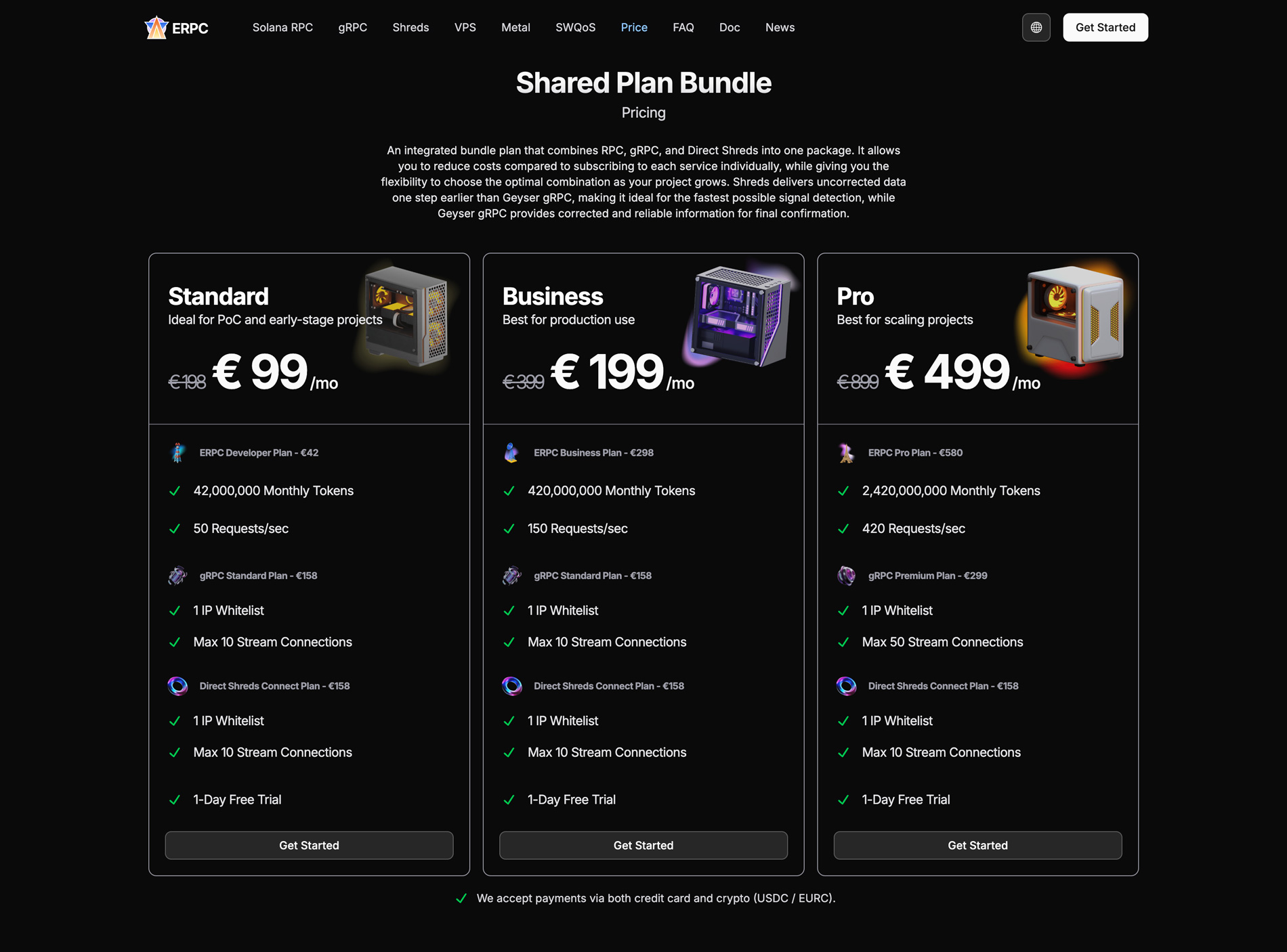
Many developers begin by using WebSocket or Geyser gRPC to access Solana’s real-time data streams.
Because the data is already decoded, onboarding is simple, implementation examples are abundant, and learning costs are low.
Because the data is already decoded, onboarding is simple, implementation examples are abundant, and learning costs are low.
Professionals, however, pursue even greater speed with Shredstream.
They often maintain stable production services over gRPC while simultaneously building faster Shred-based pipelines in parallel.
The Bundle plan addresses exactly this practical need.
They often maintain stable production services over gRPC while simultaneously building faster Shred-based pipelines in parallel.
The Bundle plan addresses exactly this practical need.
Until now, developers eager to test higher-speed connections often faced setup complexity and cost barriers.
Bundle plans remove those barriers: once you maintain RPC and gRPC connections for production use, Shredstream is included at a lower combined price—effectively making the upgrade cheaper.
This packaged model lowers psychological friction and encourages broader adoption.
Bundle plans remove those barriers: once you maintain RPC and gRPC connections for production use, Shredstream is included at a lower combined price—effectively making the upgrade cheaper.
This packaged model lowers psychological friction and encourages broader adoption.
Developers can quickly build a base application using RPC + gRPC, then learn Shredstream within the same environment as they migrate toward higher performance.
Advanced users can directly ingest both processed and confirmed streams through custom Shredstream clients, and Bundle provides a reliable on-ramp to that stage.
Advanced users can directly ingest both processed and confirmed streams through custom Shredstream clients, and Bundle provides a reliable on-ramp to that stage.
Bundle gRPC connections are unrestricted by filters and also support Devnet and Testnet environments during development.
It’s a practical, production-ready product that lets projects move smoothly from early development to full-scale deployment.
It’s a practical, production-ready product that lets projects move smoothly from early development to full-scale deployment.
For inquiries or migration support, please contact Validators DAO via Discord.
- Validators DAO Official Discord: https://discord.gg/C7ZQSrCkYR
Challenges Addressed by ERPC and Validators DAO
- Transaction failures and latency fluctuations in RPC environments
- Performance limits imposed by general infrastructure providers
- The impact of network distance on communication quality
- Difficulty for small projects to access high-quality infrastructure
Through the development of Epics DAO—a Solana NFT card-game project supporting open-source creation—we recognized how difficult it was to obtain fast, reliable Solana infrastructure.
To solve this, we built our own platform and now provide ERPC and SLV based on that accumulated expertise.
To solve this, we built our own platform and now provide ERPC and SLV based on that accumulated expertise.
Financial and DeFi applications are particularly mission-critical; even minor latency or errors directly affect the user experience.
Because Solana’s distributed validator structure makes end-to-end visibility challenging, many projects have long struggled with instability.
We deliver the high-performance foundation those projects require, improving both the developer and user experience across the entire Solana ecosystem.
ERPC and SLV stand as core components of that ongoing effort.
Because Solana’s distributed validator structure makes end-to-end visibility challenging, many projects have long struggled with instability.
We deliver the high-performance foundation those projects require, improving both the developer and user experience across the entire Solana ecosystem.
ERPC and SLV stand as core components of that ongoing effort.
- ERPC Official Site: https://erpc.global/en
- SLV Official Site: https://slv.dev/en
- elSOL Official Site: https://elsol.app/en
- Epics DAO Official Site: https://epics.dev/en
- Validators DAO Official Discord: https://discord.gg/C7ZQSrCkYR



